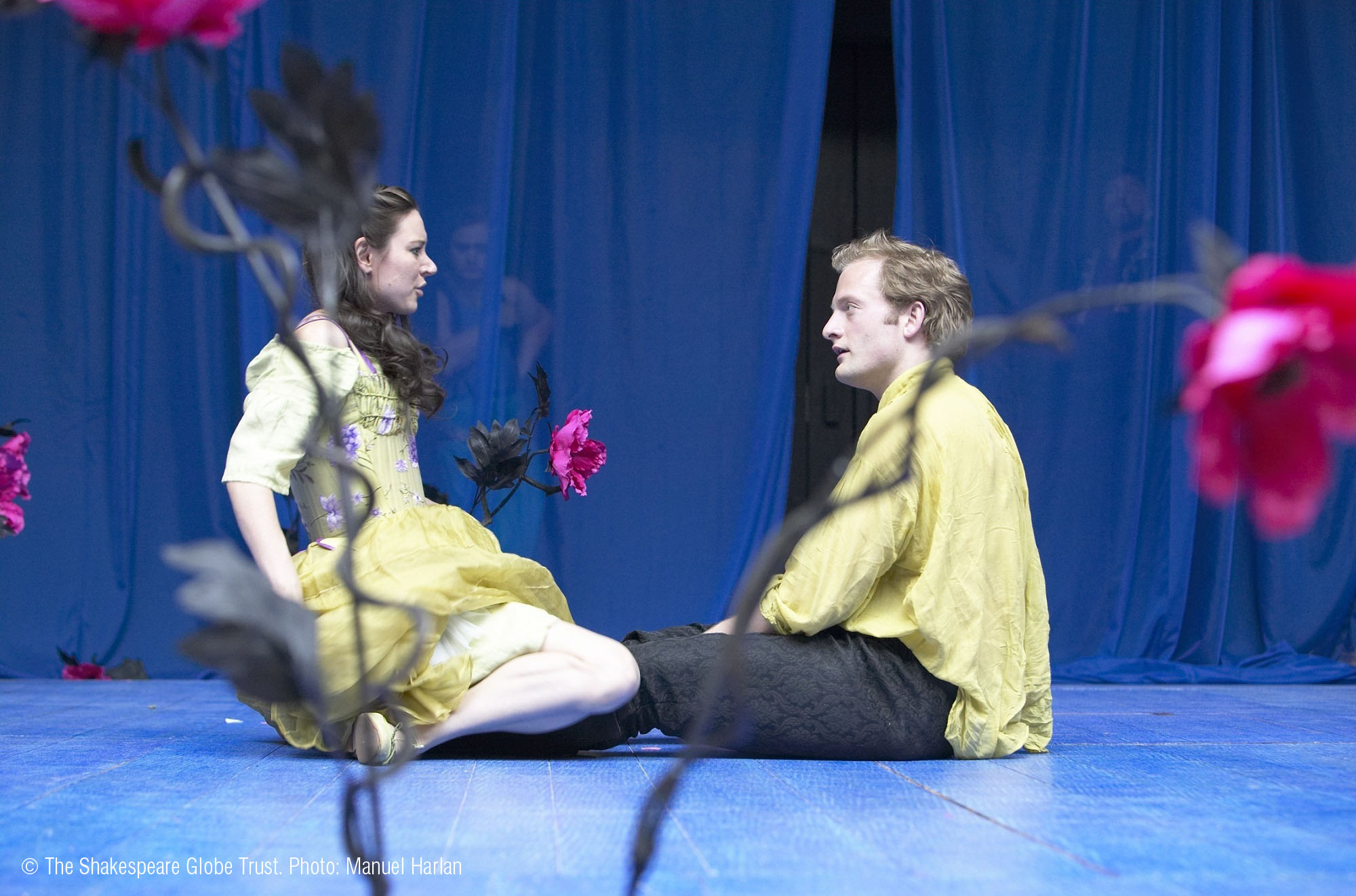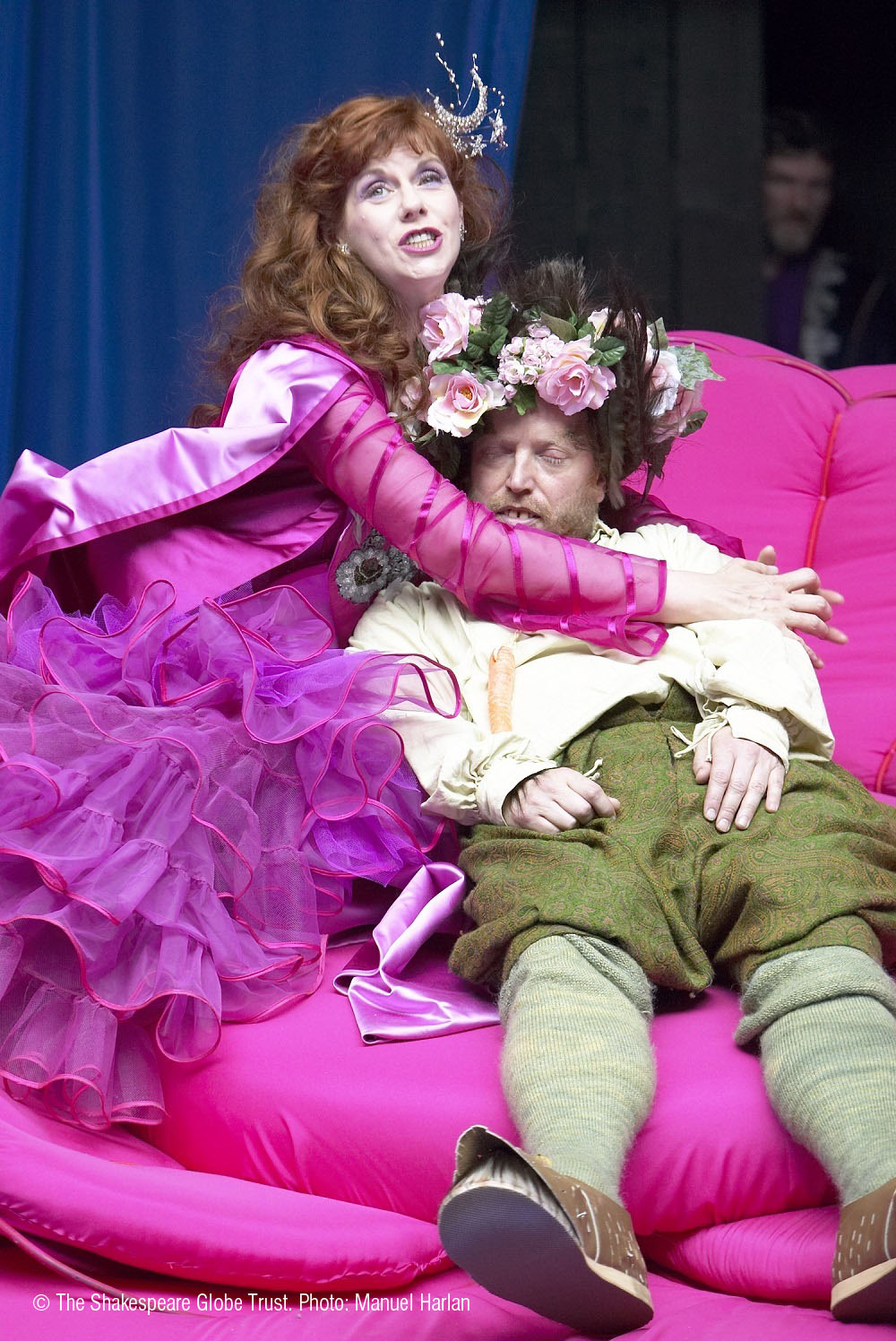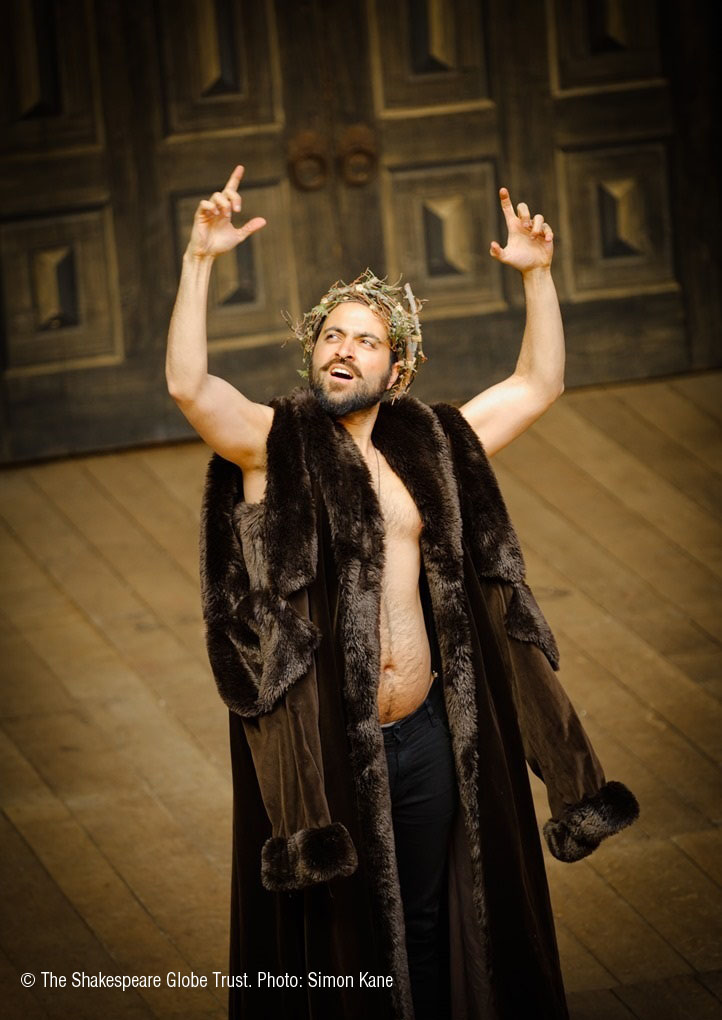In these lessons, students will engage with the themes and ideas at the heart of the text, including magic, madness and marriage. Tasks include: a debate about the play's problematic 'happy ending'; a close reading of Oberon and Titania's first meeting in Act 2, Scene 1; and a card game which will help connect themes to characters and text.
In order to benefit fully from these lesson plans, we recommend you use them in the following order:
If students are new to the play, we suggest you start with these introductory KS3 Lesson Plans. If you would like to teach the play in greater detail, use the advanced KS4/5 Lesson Plans.
These lesson plans are available in the Downloads section at the bottom of this page. To download resources, you must be logged in. Sign up for free to access this and other exclusive features. Activities mentioned in these resources are available in a separate downloadable 'Student Booklet', also at the bottom of this page. The 'Teachers' Guide' download explains how best to use Teach Shakespeare and also contains a bibliography and appendices referencing the resources used throughout.
Key Questions for students:
Can I explain what is meant by ‘theme’?
Can I list some of the key themes of A Midsummer Night’s Dream?
Key words: change, identity, illusion, love, madness, magic, marriage, metamorphosis, order, reality, sense, society, theme
Prologue: Opening Discussion
Display the Props PowerPoint, which shows images connected to the plot of A Midsummer Night’s Dream (this is available in the Downloads section at the bottom of this page). Students should first of all identify as many items as they can from the montage, e.g. a flower, a donkey’s head. Secondly, they should pick out as many ideas, themes and issues as they can that are suggested by the images in the montage, e.g. love, magic, transformation.
Enter the Players: Group Tasks
1) Theme statues
Students are given pieces of paper with some key themes written on them which represent plaques for statues, e.g. love, family, magic, marriage, power, identity, foolery, etc. Students work in pairs or threes to sculpt themselves into tableaux (or freeze-frames) representing statues. Which statues would Duke Theseus or Hippolyta choose? Which statues would Oberon or Titania choose? As an extension activity, students could embellish the plaques by having an appropriate quotation from the play engraved onto them. Theme statue templates are available in the Student Booklet.
2) Text detectives: Hermia and Lysander
This activity is designed to support students in exploring passages of a text in a more abstract, thematically-minded way. In Act 2 Scene 2, Hermia and Lysander have arrived in the woods and disagree about whether they should sleep close together or further apart. Before reading a brief extract in the Student Booklet, students could brainstorm this scenario and identify ‘ideas’ that arise from this situation. They should keep references abstract without mentioning individual characters’ names, e.g. the idea of sexual intimacy before marriage, the idea of trust, the idea of the balance of power between the sexes. Then students should read the extract with you, as you guide them through the process of wondering aloud about the importance of any of these ideas within the text and highlighting evidence. (N.B. This is the same extract as is used for Staging It, and many of the activities suggested there will support this analysis.)

3) Pick a card...
Themes are important throughout a work of literature. To be able to write well about a theme in A Midsummer Night’s Dream, students need to track its importance at different points in the play. Have students randomly select a card from each pile: a character, a theme, and a section of the play. The template for these cards can be found in the downloadable Lesson Plans at the bottom of this page. This game could be used in the following ways:
- to support students in becoming more familiar with the play, and in moving more confidently around it and making quick connections
- as a revision tool without the text
- as the basis for detailed small group discussion involving close analysis of a specific passage, through the lenses of particular characters and themes
- to prepare students for exam questions which ask them to write about one part of the play in the context of the whole text
Exeunt: Closing Questions for Students
What would I say are the main themes in A Midsummer Night’s Dream?
What kinds of connections can I make between these themes?
How might a director draw out these themes on stage?
Suggested plenary activity…
Ask students – singularly or in groups of two or three – to write 14 lines of tetrameter in rhyming couplets that summarise the main themes of the play. They should use Puck’s final words as a model.
Aside: Further Resource
- Puck closes the play with a speech that serves as an epilogue. Students could compare his words with Prospero’s epilogue at the end of The Tempest.
Epilogue: Teacher's Note
Each of the themes mentioned in this suggested learning sequence has a dedicated lesson within these materials. In depth activities linked to ‘Love’ and ‘Magic’ follow here in the Key Stage 3 section. Look in the Key Stage 4 Themes Lesson Plans for sections about ‘Marriage, order and society’, ‘Illusion and reality’, ‘Sense and madness’ and ‘Identity and change’, and for detailed guidance on writing about themes.
Key Questions for students:
Can I investigate how Shakespeare explores the theme of love in A Midsummer Night’s Dream?
Key words: affection, betrothal, commitment, devotion, identity, love, marriage, quarrel, romance
Prologue: Opening Discussion
Ask students to compare what they know about the two plays A Midsummer Night’s Dream and Romeo and Juliet, both written at around the same time by Shakespeare. How are the plots of the two plays similar and how are they different? In what sense is Shakespeare looking at similar themes, ideas and issues in the two plays? To what extent does ‘Pyramus and Thisbe’ echo the plot of Romeo and Juliet?
Enter the Players: Group Tasks
1) Text detectives: the language of love
Ask students to investigate how characters in the play express their love for each other using the ten quotations printed in the Student Booklet as the basis for their analysis. What conclusions can they draw about the language, motifs and tone used to express sincere love, attachment and devotion?
2) Text detectives: comic love-making
For this activity, students will closely read and analyse extracts from Act 3 Scene 1 and Act 4 Scene 1, which depict the ‘love’ between Titania and Bottom. You should model a close analysis of the first extract, and students could work more independently in groups looking for textual evidence in the second one. For both extracts, students should annotate the text to explore how Shakespeare parodies the language of love in these scenes. They should then write a paragraph analysing how this is achieved as per the instructions in the Student Booklet.

3) A problematic ending?
‘Even A Midsummer Night’s Dream, which seems to end happily, raises questions. We know that Demetrius can only love Helena because he has been doped by love-juice and that the happiness of their marriage will always rely on the fairy kingdom’s magic.’ Taken from Paul Edmondson, Shakespeare: Ideas in Profile (Profile Books, 2015)
Discuss this quotation with students and ask them to make notes in the Student Booklet about the following issues:
- What do they think of the play’s ending?
- Do Demetrius and Helena truly love each other at the end of the play?
- Look for evidence of how Shakespeare uses language in the closing scenes of the play to establish the idea of a true and lasting bond between these characters.
Compare Demetrius and Helena’s relationship with what brings the play’s other ‘couples’ together, e.g. Titania and Bottom, Hermia and Lysander, Theseus and Hippolyta.
Exeunt: Closing Questions for Students
In what different ways does Shakespeare write about love in this play?
To what extent might we describe this play using the modern phrase ‘a romantic comedy’?
Suggested plenary activity…
Create a colourful, illustrated mindmap with the word ‘love’ in the middle. Reflect the importance of this theme in the play in terms of characters and their situations, relationships and motivations. Students should ensure that they include key quotations and consider the various characters and plotlines, such as the play-within-a-play.
Epilogue: Teacher's Note
In the Key Stage 4 Historical and Social Context Lesson Plans, you will find further activities relating to the plot and sources of ‘Pyramus and Thisbe’.
Key Questions for Students:
Can I investigate how Shakespeare explores the theme of magic in A Midsummer Night’s Dream?
Key words: antidote, audience, enchantment, fairy, magic, potion, spell, sprite, transformation
Prologue: Opening Discussion
Suggest to students that they are going to be investigating the existence of magical activity in the play. Ask students to find clues as fast as they can, i.e. words or phrases that suggest that magic is present. List them hurriedly on the board to create a sense of excitement! Clues might include references to the magical ‘juice’ or ‘liquor’, or Puck’s ability to travel around the world in forty minutes.
Enter the Players: Group Tasks
1) Drama games
Students could do some warm-up drama games to support them in thinking about the power of magic, the magical woodland setting, and the dramatic and sudden effects of magic on the play’s characters! The following suggestions are taken from Jessica Swale’s book Drama games for classrooms and workshops. More detailed descriptions of the games are provided in the downloadable Lesson Plan.
- Students could devise simple sound effects and movements for a woodland version of the game ‘Whoosh!’
- In ‘The Land of Back-to-Front’, students must do the opposite of the instructions given
- The game ‘Emotion Machines’ could be used to explore the abrupt changes in characters’ emotional states as a consequence of magic
2) Text detectives: Myth and magic
In Act 2 Scene 1, Shakespeare introduces the audience to Titania and Oberon. You could model analysing an extract from this scene, such as lines 115-187 which are printed in full in the Student Booklet. Students should list in the Student Booklet all the evidence they can find of these characters’ magical powers. The following points might also arise from the ensuing discussion:
- The full extent of their powers are established by Shakespeare from the very beginning
- He makes numerous classical allusions so that his characters assume mythical proportions in the audience’s mind
- However, we also recognise certain human traits and imperfections in these characters making them all the more entertaining
- Notwithstanding the obvious differences, Shakespeare is also drawing a parallel between these rulers and earthly ones. Although their powers might be different, rulers of all kinds have the ability to deeply affect and transform their subjects’ lives

3) Transformations
Ask students to list the various magical transformations that occur in the play (including the corrective antidotes!) Students could then watch footage from the 2012 Globe production of the play (perhaps comparing this with clips from other versions). How are the transformations staged? What effects do these transformations have on the audience? What roles do costume, make-up, wigs, lighting, music, etc. play in the transformation? How do the actors convey to the audience that they have undergone a change? Students could choose one pivotal moment of transformation and write detailed ‘prompt book’-style annotations, showing how they would stage this particular moment in their own production.
Exeunt: Closing Questions for Students
How important is magic in this play?
How do you think modern audiences usually react to the supernatural elements in the play?
What about in Shakespeare’s time?
Suggested plenary activity…
Students could now brainstorm all the different words and events in the play that connect to the theme of magic. Given the play in question and the topic, students could make their word webs look as magical as possible! Take feedback and encourage students to add to their own word webs in the light of others’ feedback.
Aside: Further Resource
- Students could reflect on the importance – and the dramatic power – of other transformations in Shakespeare. These can be magical or otherwise, e.g. Ariel turning into the harpy in The Tempest, Hermione’s apparent return from the dead in The Winter’s Tale, Malvolio’s appearance wearing yellow stockings in Twelfth Night.
Epilogue: Teacher's Note
You will find further materials within the Key Stage 4 Themes Lesson Plans (Illusion and Reality). There are also numerous activities relating to the fairy characters in both the Key Stage 3 and the Key Stage 4 materials for this play.
